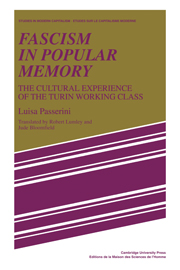I - ORAL SOURCES AND THE ANALYSIS OF CULTURAL IDENTITIES
Published online by Cambridge University Press: 04 August 2010
Summary
The oral sources presented in this part emphasise the subjective character of their interpretation. This subjective dimension does not allow a direct reconstruction of the past, but it links past and present in a combination which is laden with symbolic significance. While these oral sources have to be placed in a proper framework, they are highly relevant to historical analysis. These testimonies are, first and foremost, statements of cultural identity in which memory continuously adapts received traditions to present circumstances.
This general character of the life-histories is brought to light by examining the recurring self-representations (autorappresentazioni). These show a strong degree of stereotypicality, as revealed also by the difference between their message – with its mythological and cosmological reverberations – and the other levels of the testimonies which are the subject of parts II and III. In self-representations, narrative forms are repeated which are affected, though not in a deterministic way, by age and gender. The single story-telling strategies variously combine the narrative resources available, including stereotypes, taking account of division of labour and power as well as individual circumstances. The women, for example, above all the older interviewees, show a preference for representing themselves as ‘always having been rebels’; the men, with a range of subtle variations, prefer to present themselves as capable workers. Such self-images are the opposite ends of a spectrum belonging to a common culture, which also gives rise to a variety of combinations.
- Type
- Chapter
- Information
- Fascism in Popular MemoryThe Cultural Experience of the Turin Working Class, pp. 17 - 18Publisher: Cambridge University PressPrint publication year: 1987



